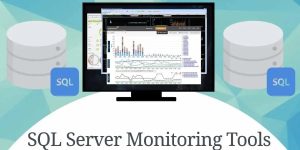Asset Management System

What is asset management and how does it benefit your business?
Asset management is the service of managing the wealth and investment portfolio of an institution or organization on their behalf. The customers here are usually high profile. So what exactly is asset management and how can it benefit your business?
What we call wealth is invaluable in every aspect of life and is the most important part of the business equation. Although the concept of entity is broad, it can refer to anything that can be controlled and used to store or produce more value. These include the physical and intellectual assets your company owns.
What is an asset? What are the asset types?
Tangible assets are physical items such as machines, tools, real estate, and vehicles. Examples of intangible assets include intellectual property, databases, operational data, software license agreements, and corporate capital.
The idea of spending time and money protecting any non-revenue assets may seem like an inefficient use of resources. But as a business grows and scales, the importance of asset management increases at the same rate. Ignoring your company’s assets can turn into a financial nightmare.
When properly managed, assets can contribute to your company’s growth, financial success and promote sustainability. However, poor management practices can hurt your bottom line and potentially hinder growth opportunities.
Asset management ensures that your company continues to grow and expand with proper use of assets. It can help you keep your business running, manage risks and seize opportunities.
Asset management empowers businesses
The concept of asset management is not new or revolutionary. But it has powerful and important applications for businesses. When applied correctly, asset management can also enable an organization to grow more efficiently by solving the most pressing issues that plague it.
There are frequent scenarios where asset management, which is an important part of an effective business management strategy, is also overlooked as a mundane task. However, this perception is completely wrong. As asset management is a critical component of any profitable business, it adds value to both the organization and its shareholders.
Asset management includes people from all business areas and divisions, from COOs to managers, supervisors to engineers, and even IT professionals and equipment operators.
What does asset management do?
Businesses investing in asset management can reap a variety of benefits. Not all of these benefits are linked to financial gains. Real-time asset tracking generates a continuous stream of data, encourages accountability and keeps planning and equipment maintenance on track with the help of an appropriate asset management system.
Tracking assets (such as fixed assets) with the help of asset tracking software eliminates some disadvantages such as being dependent on erroneous data and not knowing where assets are. It can also provide businesses with a 360-degree view of the entire lifecycle of assets, including.
Time and resource-saving asset management software reduces capital expenditures and saves on maintenance costs. Thus, planning efficiency increases and total operational costs decrease.
Such a system facilitates the adoption of a risk management strategy and increases regulatory compliance. Also, the accuracy of depreciation rates and asset valuation is improved.
Who is an asset manager?
An asset manager is simply a person who manages a particular group of assets. This person’s purpose is simple; Developing more organizations to save money and reduce waste by tracking assets. An asset manager is responsible for developing and executing an asset management strategy, ultimately managing the assets entrusted to them.
Asset managers employ researchers and analysts responsible for monitoring asset performance, providing sound investment advice, and dealing with other tasks that may affect the performance of assets. In particular, asset managers look for high-growth investment opportunities before anyone else.
What is asset management software?
Asset management software is a tool that helps businesses make their income-generating assets more useful.
This software provides a comprehensive view of the lifecycle of an asset, from acquisition to distribution, from maintenance to disposal.
While an organization can track its assets with a spreadsheet, asset management tools allow users to evaluate data about each asset, helping them make more informed decisions about asset management.
What is enterprise asset management and what does it offer?
Enterprise Asset Management (EAM) is a set of processes for controlling and measuring asset performance to extend the useful life of an asset. It is a solution that helps asset-heavy companies focus on asset management, maintenance, condition and efficiency, from acquisition to disposal. EAM software also helps manage an organization’s assets.
- Features of the EAM system include:
- Asset reporting and analytics
- Asset purchasing and acquisition management
- Supply chain and technical operations, maintenance and repair (MRO) management
- Asset tracking and management
- Maintenance planning and scheduling
- Labor and inventory management
What is digital asset management?
Digital Asset Management (DAM) is an ever-growing industry that helps businesses manage their digital assets (digital media and content) in a logical, organized and accessible way.
DAM software provides a cost-effective method of controlling access to digital assets. It is a discipline used for organizing, classifying, searching, retrieving and archiving digital files such as images, documents, audio and video clips.
It also provides various safety and efficiency benefits. Using DAM, businesses can control access to their digital assets and provide different levels of access to content based on predetermined but variable roles.
Increasing efficiency by reducing the costs associated with finding or recreating assets, DAM allows media files to be stored, edited and viewed securely.
The features of the DAM system are as follows:
- Storage and organization of different file types
- Access management for all files
- Metadata assignment for all files
- Version control to keep track of gradually changing versions of the same asset
What are the challenges of asset management?
An essential step in any modern business process, asset management facilitates the proper procurement, operation and management of all assets to industry standards and specifications.
It is essential to ensure that asset management is well organized at every stage of a project, from ideation to completion. Managers responsible for managing, protecting and monitoring assets may face a number of challenges at these stages. We can list them as follows.
Choosing the appropriate assets
Most business managers are unaware of their corporate infrastructure. Deciding which assets to procure in such scenarios can become more complex. Then asset purchasing teams can start spending money on new assets without fully understanding the needs.
So if you know what assets you own, who else has them, what is being used, and how old or expired existing assets are, you can make informed decisions about purchasing new equipment and software.
Purchase of uncontrolled assets
A conventional supply-oriented asset strategy is often responsible for incorporating more uncontrolled assets into the organization. In IT, such assets are called shadow assets, which are implemented internally without the authority of the IT department. This can cause uncontrolled assets to enter the company, increasing costs, and security and compliance issues.
Cross-functional entities
Managing assets across all business units is a major challenge for efficient operations. This is because business units want to use their assets to make their business meaningful and often ignore the needs of other units. The problem is that assets are often borrowed or shared by multiple business units. Therefore, when an asset is needed by more than one unit, the risk of business interruption increases if it is currently used by someone else.
Benefits of asset management
Assets are valuable resources that a company needs to run smoothly. Asset management also ensures that the right people always have access to assets and that unnecessary losses do not occur.
There are several benefits to using asset management to ensure cost-effective procedures and maximum return on investment for all your corporate assets. Some of those benefits are as follows:
Operational efficiency increase
Once the asset management system is implemented, businesses can begin to understand the purpose of each asset. This encompasses capabilities, management and disposals to reduce costs.
All information together
Most asset management software includes comprehensive reporting features. This helps businesses get the information they want from a single dashboard. In this way, you can easily access temporary and basic reports tailored to specific needs.
Enhanced asset reliability
Asset management and tracking increases the reliability of assets. This allows asset managers to track maintenance cycles, analyze expenses and review asset availability.
Saving maintenance cost
Organizations often find that high maintenance costs are reduced when an automated asset management system is implemented. Critical assets require a robust preventive maintenance strategy. The pesky ghost entities that often get lost in spreadsheets can be easily found and managed with an asset management strategy.




